Scottsdale, AZ Pollen and Allergy Report for Summer 2023
Pollen Allergy Trends in Scottsdale, AZ
When is pollen lowest in Scottsdale, AZ?

February
Lowest month total PPM
Avg. PPM
When is pollen highest in Scottsdale, AZ?

March
Highest month total PPM
Avg. PPM
How does pollen in Scottsdale, AZ compare to Arizona?
Scottsdale has a lower average PPM than the state of Arizona.
Scottsdale yearly avg PPM:
Arizona yearly avg PPM:
How does pollen in Scottsdale, AZ compare to the USA?
Scottsdale has a lower average PPM than the USA.
Scottsdale yearly avg PPM:
USA yearly avg PPM:
Is pollen worse this year in Scottsdale, AZ?
Spring 2023 was better than spring 2022.
Spring 2023 PPM:
Spring 2022 PPM:
Average PPM in Scottsdale, AZ
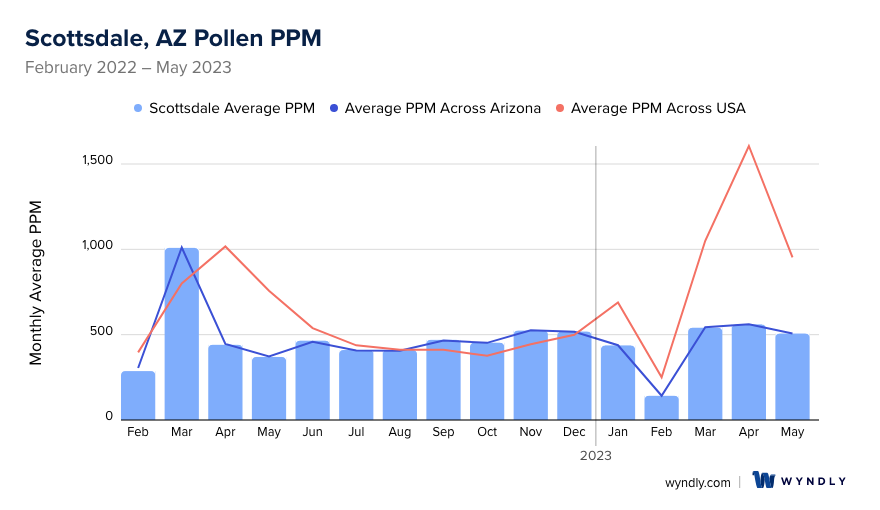

Scottsdale, AZ Pollen and Allergy Breakdown by Month
Grass
When is grass pollen highest in Scottsdale, AZ?
August has the highest grass pollen in Scottsdale, AZ with an average PPM of
When is grass pollen lowest in Scottsdale, AZ?
December has the lowest grass pollen in Scottsdale, AZ with an average PPM of
Tree
When is tree pollen highest in Scottsdale, AZ?
March has the highest tree pollen in Scottsdale, AZ with an average PPM of
When is tree pollen lowest in Scottsdale, AZ?
July has the lowest tree pollen in Scottsdale, AZ with an average PPM of
Weed
When is weed pollen highest in Scottsdale, AZ?
December has the highest weed pollen in Scottsdale, AZ with an average PPM of
When is weed pollen lowest in Scottsdale, AZ?
February has the lowest weed pollen in Scottsdale, AZ with an average PPM of
Scottsdale, AZ Pollen Monthly Breakdown by Pollen Type
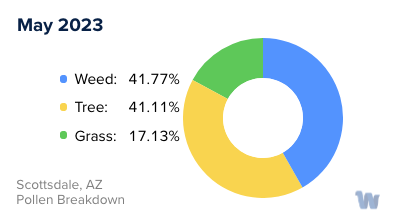
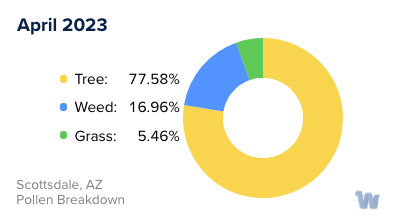



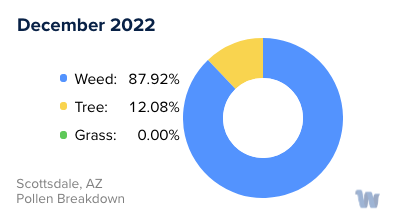
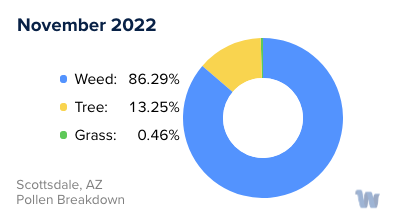


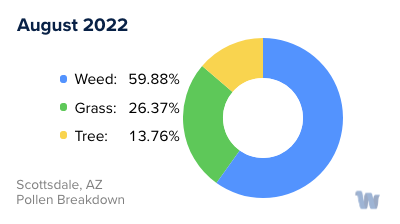
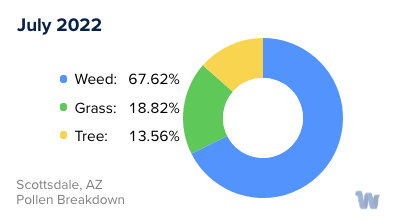

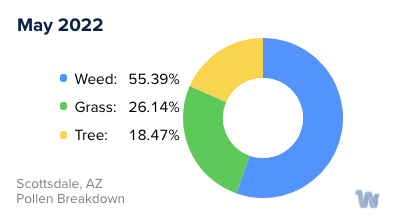



Pollen and Hay Fever in Scottsdale, AZ
As the warm sun bathes the picturesque landscapes of Scottsdale, Arizona, it's not uncommon for the residents to find themselves grappling with a common nuisance: pollen allergies, often referred to as hay fever. This condition can turn the vibrant spring and early summer months into a season of sneezing and discomfort for many.
In Scottsdale, the types of pollen causing the most hay fever symptoms are primarily from trees, grasses, and weeds. The city is home to a variety of indigenous and imported flora that contribute to the pollen count. Among the trees, Olive, Mesquite, and Palo Verde are the usual culprits. These trees bloom in the spring, releasing pollen into the air that can trigger allergic reactions.
Grasses also play a significant role in Scottsdale's pollen scene. Bermuda grass, a common choice for lawns in the area, can be a substantial source of pollen during its peak growth season, typically in late spring and early summer. The fine, powdery pollen from this grass can easily be carried by the wind, finding its way into homes and noses alike.
Lastly, we must mention the weeds. The desert landscape of Arizona is home to several types of weeds that release pollen, including Russian Thistle and Ragweed. These hardy plants can bloom and shed pollen nearly year-round, depending on the specific species and the environmental conditions, but they are typically most prolific in the fall.
In Scottsdale, the pollen count often varies with the seasons, and it is influenced by weather conditions. Springtime usually brings the highest pollen counts, thanks to the blooming trees and grasses. Summer can offer a brief respite, as the high temperatures can suppress some of the pollen production. As fall arrives, weed pollen becomes more prevalent, rounding out a cycle of pollen-related allergy triggers that spans much of the year.
Living in Scottsdale, Arizona, comes with many perks, but dealing with pollen allergies can be a challenging part of the experience. Understanding the types of pollen and their seasonal patterns can help residents better anticipate and manage their hay fever symptoms.


